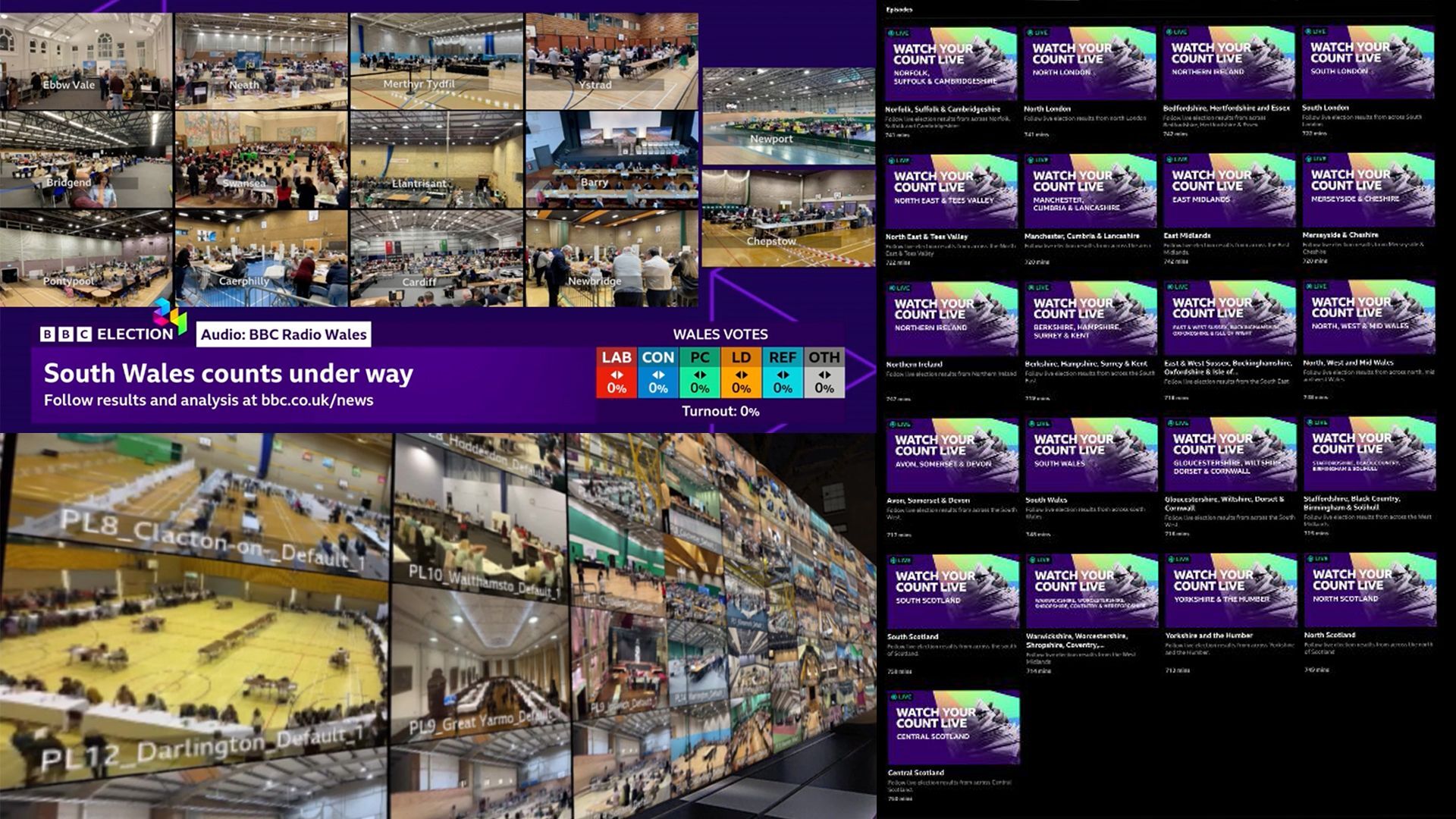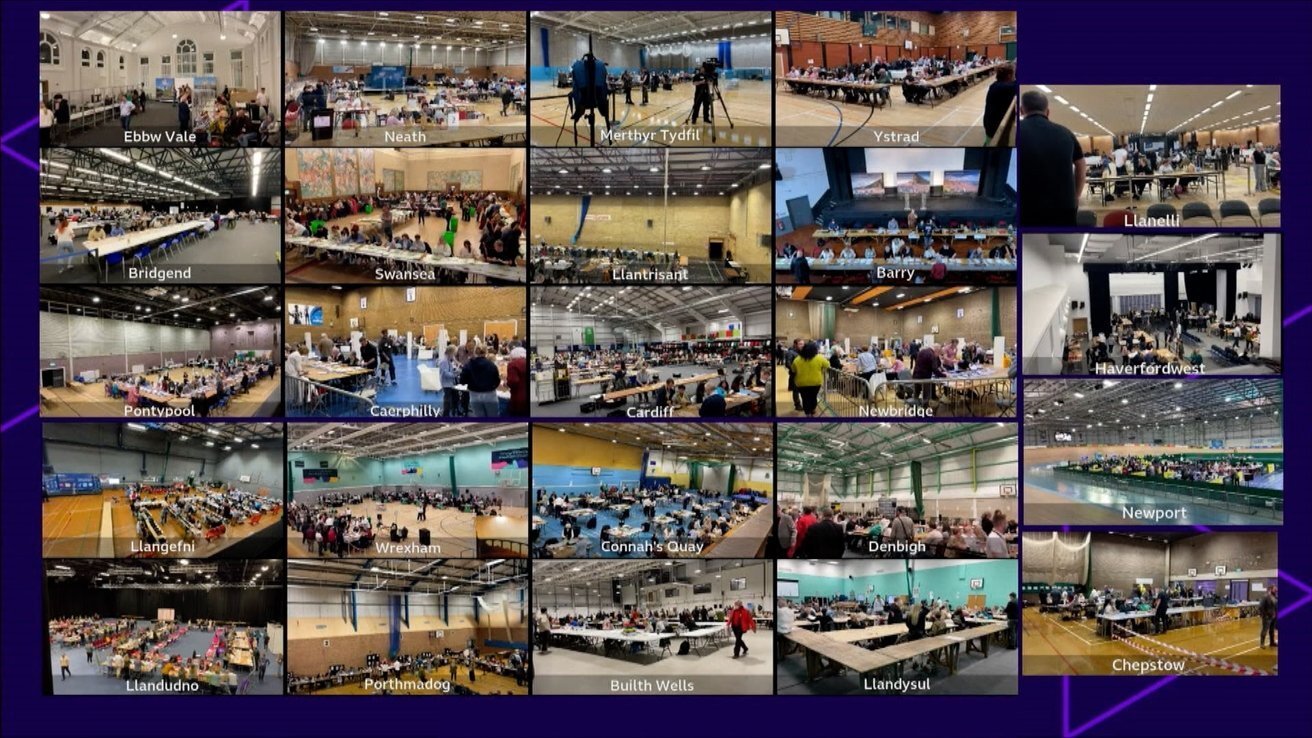Case Study: How the BBC captured 369 live feeds on election night

Subscribe to NCS for the latest news, project case studies and product announcements in broadcast technology, creative design and engineering delivered to your inbox.
The 2024 UK General Election marked a shift in how major political events are broadcast to the public. The BBC, in collaboration with TVU Networks, implemented a new cloud-based production system that allowed for coverage of the vote-counting process across the country.
On election night, the BBC streamed live feeds from 369 vote-counting locations simultaneously. This feat, which would have been logistically challenging and expensive using traditional broadcasting methods, was made possible through cloud technology and mobile apps.
The core of this new system was the TVU Anywhere mobile app. BBC representatives at each counting location used smartphones equipped with this app to transmit live video back to the network. This setup was notably simpler and more environmentally friendly than traditional broadcasting equipment, which often requires large vehicles and complex gear.
“This approach not only upheld the BBC’s highest quality standards but also pioneered a new method of election broadcasting that would have been near impossible using traditional methods” said BBC News’ Geraint Thomas, who led the project.
“The TVU cloud platform allowed us to scale up a vast number of feeds and handle peak traffic seamlessly without investing in additional hardware. This was both an editorial and technological innovation that transformed the viewing experience, bringing the vote counting process closer to our audience, setting a new benchmark in election coverage.”
The system’s simplicity allowed even non-technical staff to set up and operate the equipment, broadening the pool of people who could contribute to the coverage. This approach enabled the BBC to capture more live content without requiring specialized broadcast teams at each location.
At the BBC’s London headquarters, these feeds were combined into a large mosaic display, visually representing the vote-counting process across the UK. Viewers at home could access these feeds through the BBC website and BBC iPlayer, allowing them to focus on their local areas or explore the process nationwide.
The new approach reached a peak audience of 4.6 million viewers in the UK, suggesting significant public interest in this more transparent and accessible form of election coverage. Viewers could choose which feeds to watch, providing a level of personalization not previously available in election broadcasts.

However, this new system was not without its challenges.
Relying on cellular networks for transmission meant that areas with poor coverage could face streaming difficulties. The BBC had to ensure that their custom-created smartphone kits could handle local pressures on cellular networks to maintain consistent coverage.
Integrating this new system with the BBC’s existing broadcast infrastructure was another hurdle. The network had to ensure that the feeds could be used seamlessly across television, radio, and digital platforms. This integration allowed for a more cohesive coverage strategy, with political commentators able to provide real-time updates and analysis alongside the live feeds.
The environmental impact of this new approach is worth noting. By reducing the need for large broadcast vehicles and equipment at each location, the BBC was able to lower the carbon footprint of their election coverage. This aligns with growing concerns about the environmental impact of large-scale broadcasting operations.
“When we started planning this project, many believed the election would be held later in the year” added Geraint. “In a matter of weeks, we managed to achieve what we thought would take months to develop, and integrated the TVU cloud platform with our on-premise workflows in a cost-effective manner.”
“It’s about innovating together and redefining the boundaries of broadcast technology,” said Paul Shen, CEO of TVU Networks, praising the BBC for leading the way in blending linear and digital broadcasting across their media supply chain to offer a wider variety of content. “This collaboration is a testament to what’s possible when we combine our strengths. The future of broadcast is now, offering an accessible, sustainable model that opens up endless possibilities for storytelling to audiences everywhere.”
From a journalistic perspective, this technology made the BBC more responsive to developing stories. With access to live feeds from every counting location, they could quickly shift focus to areas where interesting developments were occurring. This flexibility potentially allows for more dynamic and engaging coverage.
However, the abundance of live feeds also presents new challenges for editorial teams. With so much content available, there’s a risk of information overload for viewers. Careful curation and guidance become even more crucial to ensure that the most important stories are highlighted amidst the wealth of available footage.
The success of this approach raises questions about the future of election coverage and broadcasting in general. Will other networks adopt similar technologies? How might this change the way viewers engage with live events? There’s potential for this type of coverage to extend beyond elections to other large-scale events that occur simultaneously across multiple locations.
Subscribe to NCS for the latest news, project case studies and product announcements in broadcast technology, creative design and engineering delivered to your inbox.




tags
2024 United Kingdom General Election, BBC News, Paul Shen, TVU Anywhere, TVU Networks
categories
Case Study, Elections, Featured